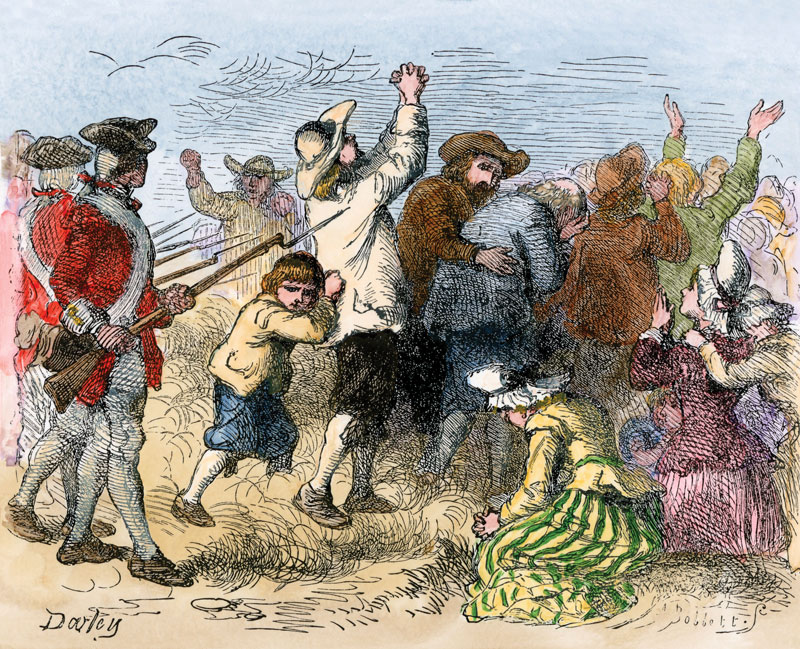At least 10,000 Acadians were forcibly displaced
In the century after it was established in 1604, the eastern North American colony of Acadia changed hands between France and Britain six times before finally landing under British rule in 1713.
Through it all, residents of the region around the Bay of Fundy were able to retain their language, religion and customs. The Acadians, however, wouldn’t sign an oath of allegiance to the British Crown because they weren’t prepared to bear arms against France. But by 1730, they agreed to remain officially neutral.
Despite this promise, the British feared the “French Neutrals” would support France in any war, and there always seemed to be the threat of conflict between the historic rivals. In 1755, another agreement was circulated, this one without any conditions—in the event of war, the Acadians would have to fight the French. They refused to sign.
By August, a fight was imminent, and England made the decision to expel the Acadians rather than risk having them support the French. At this point, however, they had been under British rule for 42 years and many Acadians had been born British subjects.
On Aug. 11, the governor of Nova Scotia, Charles Lawrence, wrote to Lieutenant-Colonel John Winslow: “you must Collect ye Inhabitants together in order to their being Transported in the Best Manner in your Power Either by Stratagem or Force as Circumstances may requirer, but above all I Desire you would Not pay the Least attention to any remonstrance or Memorial from any of the Inhabitants.…”
Winslow certainly didn’t pay attention to their suffering. The British surrounded one Acadian church on a Sunday morning and captured the men and threatened their families with bayonets.
Land and livestock belonging to Acadians was seized. They were allowed to keep only whatever money they had and their household goods. Hundreds of homes were burned and many inhabitants were rounded up like cattle and herded onto ships.
John Thomas, a doctor who aided in the deportation, observed the tragic scene: “The women were very distressed, carrying their newborns in their arms; others brought along in carts their infirm parents and their personal effects. In short, it was a scene in which confusion was mixed with despair and desolation.”
The rationale for the expulsion was military, but British immigrants from New England had coveted the fertile Acadian farmland and strongly supported Lawrence’s move.
At least 10,000 Acadians were forcibly displaced. Many died in the process, either by drowning when ships sank or of typhus, smallpox or yellow fever contracted aboard the ships, where conditions were wretched. Others were scattered across France, England and the Antilles, while another large group ended up in Louisiana, where they largely retained their culture while enlivening local norms. ‘Acadian’ evolved to ‘Cajun’ and, in 1980, the U.S. government officially recognized them as a distinct ethnic group.
In 1764, Acadians were allowed to return to Nova Scotia, but their land had been otherwise claimed. Those who returned instead settled in New Brunswick, Prince Edward Island and Cape Breton.
Despite the Grand Dérangement, their language and culture survived and remained vital during the course of more than two centuries.
Advertisement






















